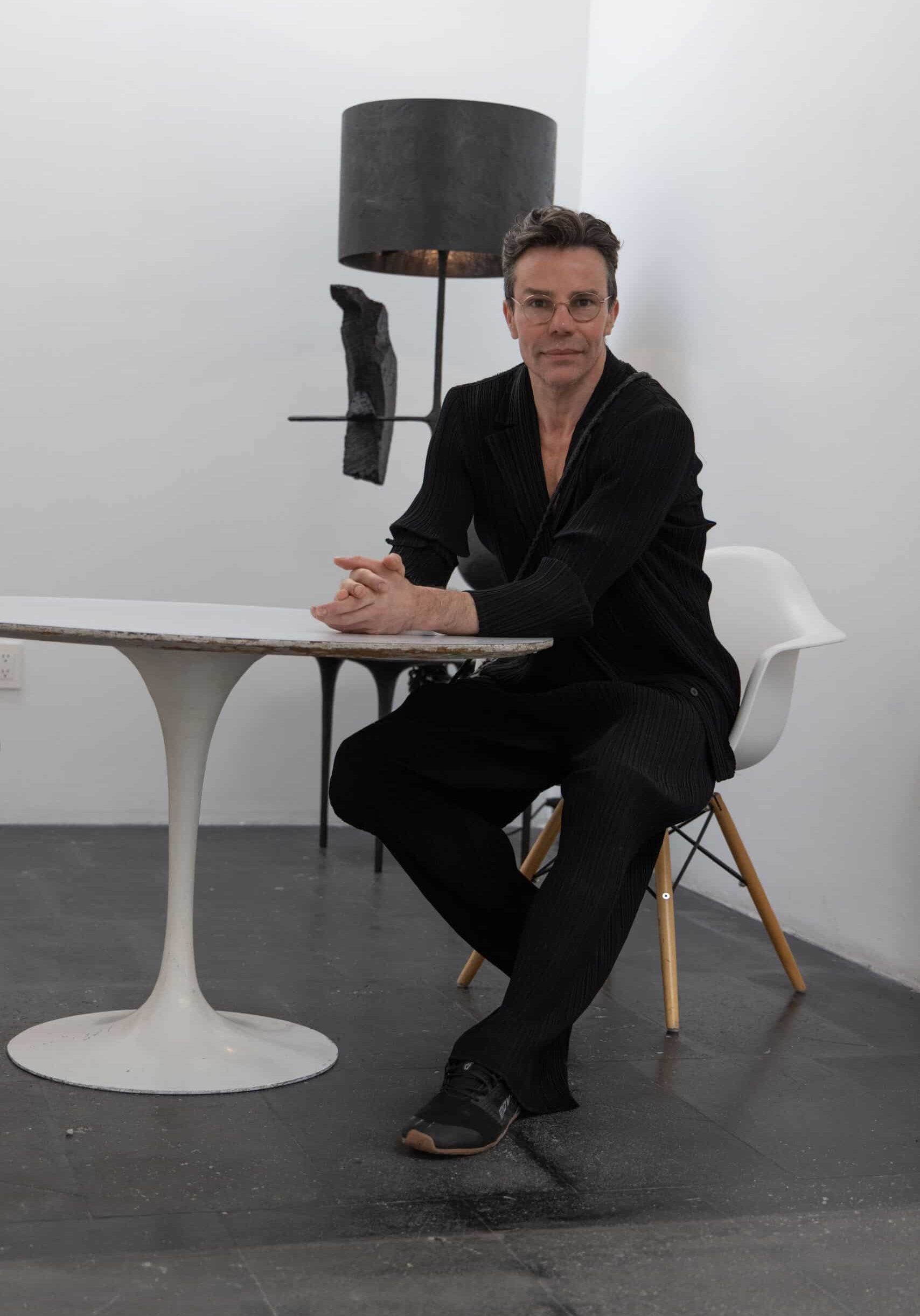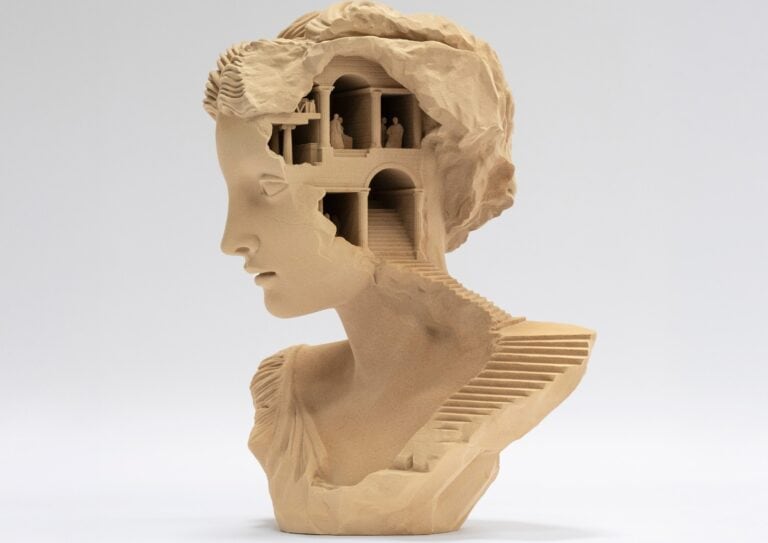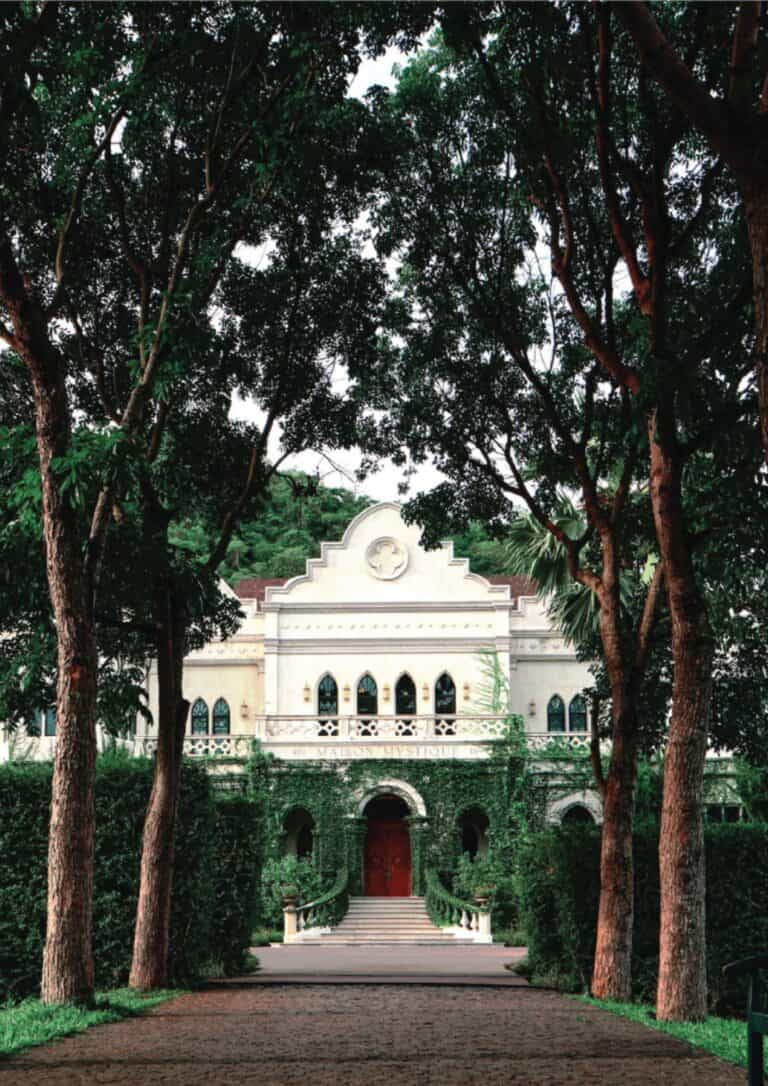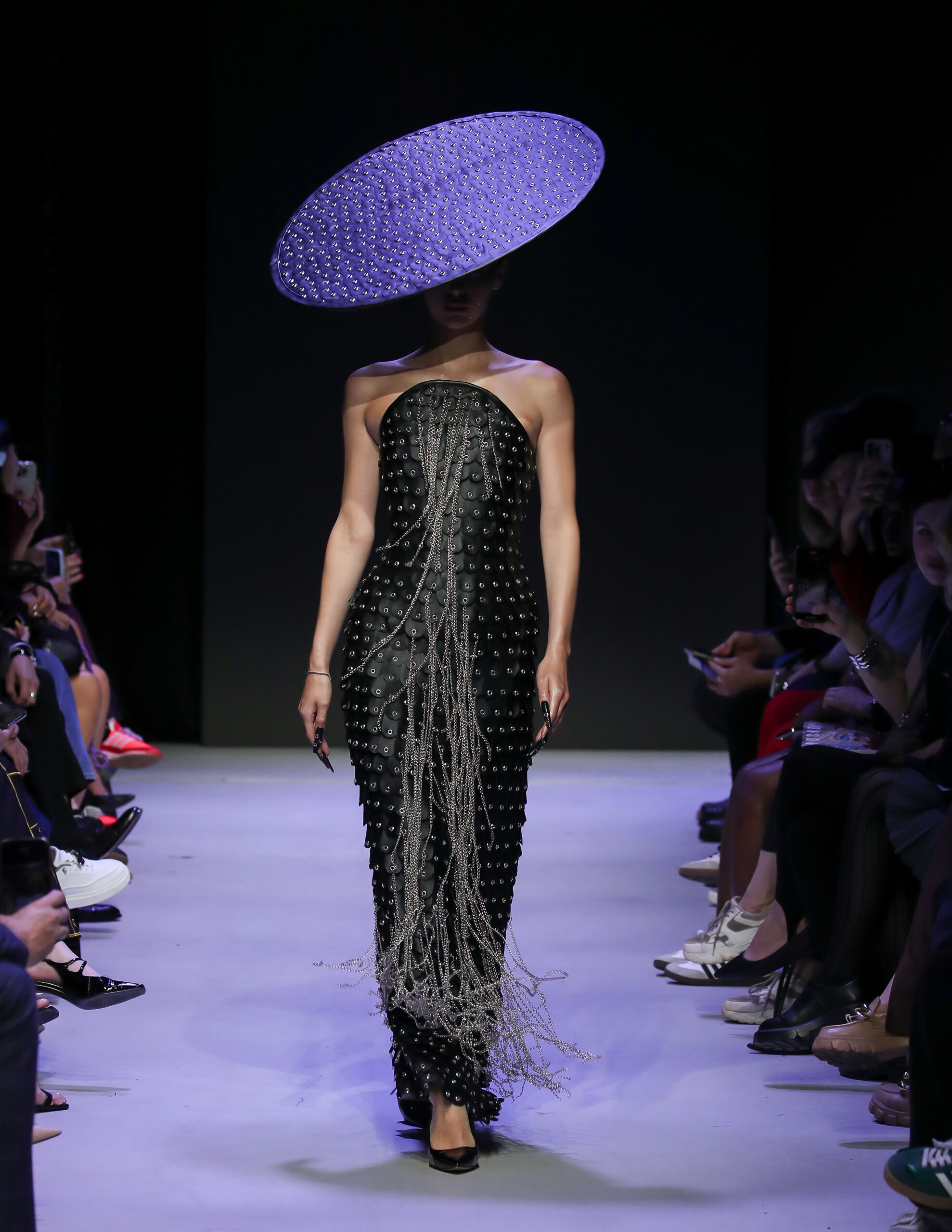
Global South Countries Stake Their Claim on the Runway
Patrick Duffy
Global South Countries are no longer waiting for approval from Paris, Milan, or New York. They are writing their own narratives and reshaping the global fashion conversation at Moscow Fashion Week. On Zaryadye Park’s Floating Bridge, with the skyline turning into a dramatic backdrop, the shift was clear.
Now in its fifth season, MFW celebrates both its past and present focus on global runways, craft, and sustainability. More than two hundred designers, from Brazil and South Africa to China, Armenia, and even Russia’s remote regions, proved that fashion’s future has many centers, with Global South countries among the strongest.
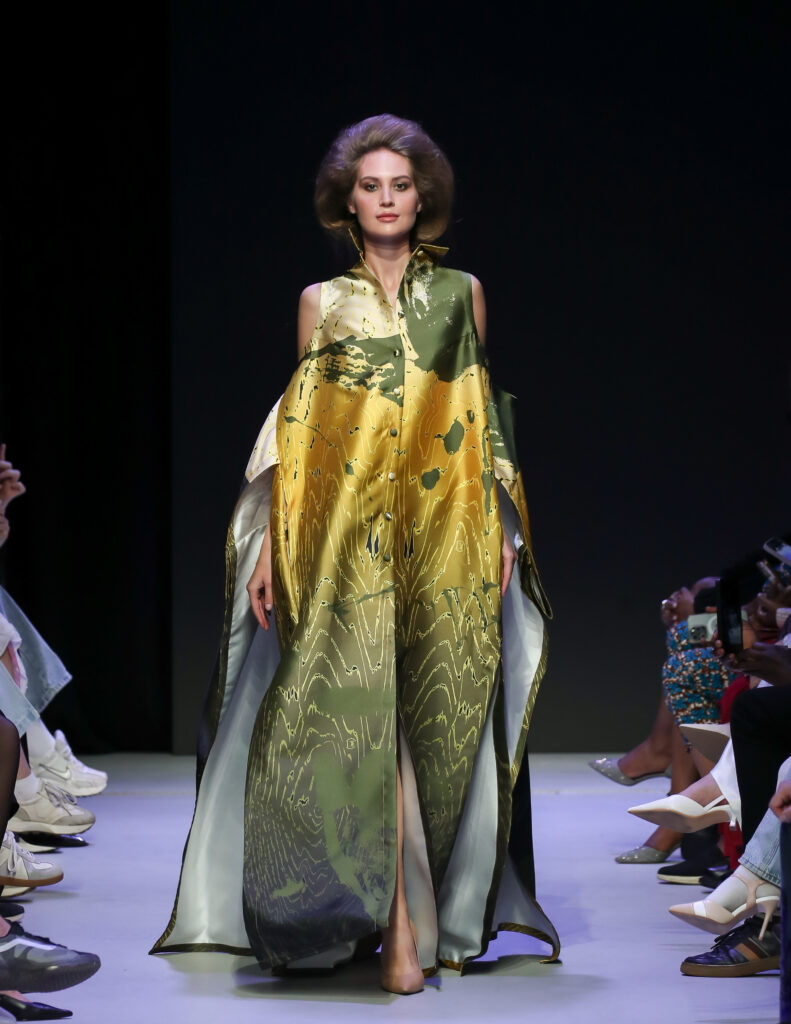
Heritage Meets Experimentation
Alena Akhmadullina sliced folkloric embroidery into sharp coats with heritage urgency. Meanwhile, Alexander Arutyunov sent sculptural shoulders gliding over the river’s reflection, proving drama still captivates. Yakutia’s Inniki spun a children’s story into shimmering eveningwear. Julia Dalakian delivered draped tailoring that spoke softly but carried weight. Moreover, Ruban Couture chose Tolstoy’s House, mixing literary history with romantic suiting and polished edges.
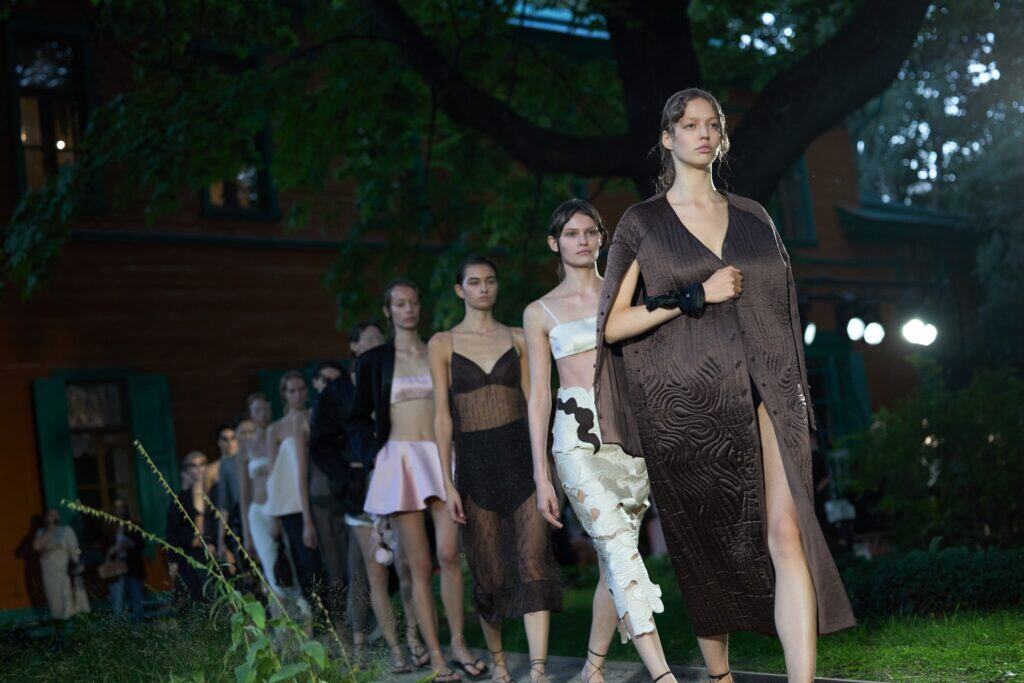
Global South Countries in the Spotlight
The most electric energy came from Global South Countries and their diaspora. For example, David Tlale of South Africa sent metallic brocades and a finale cape that drew gasps, grandeur as cultural statement. Similarly, Artemisi of Brazil brought molten-metal illusions and daring safety-pin details, merging avant-garde bravado with sustainability. In addition, Bibiré International (Nigerian-American) and Pia Lindsay (U.S.) paired Afro-futurist prints with eco-conscious eveningwear, proving that responsible fashion can be glamorous. Subai, led by China’s Ma Guai, wove hand-dyed Tibetan pulu wool into modern coats, a bridge between mountain traditions and city streets.
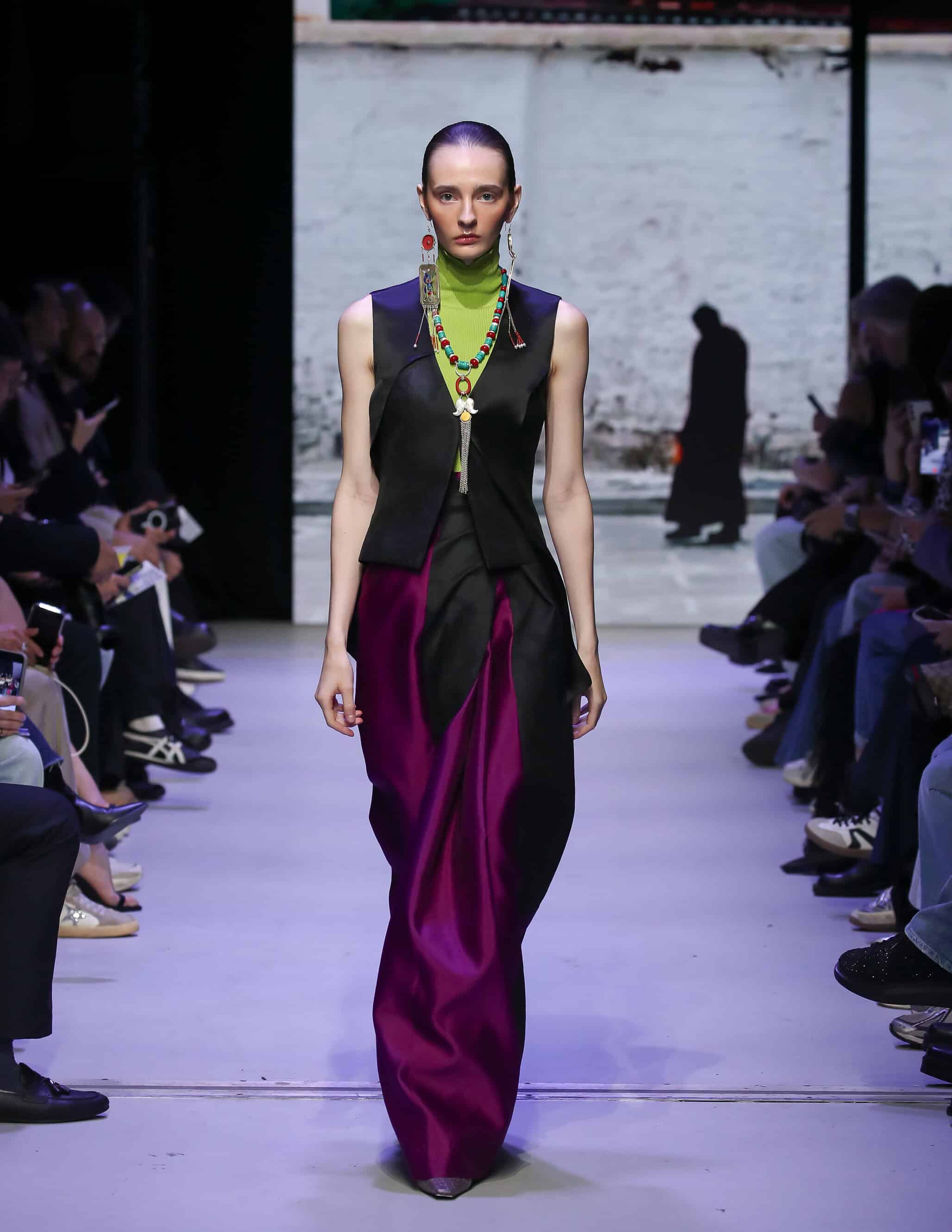
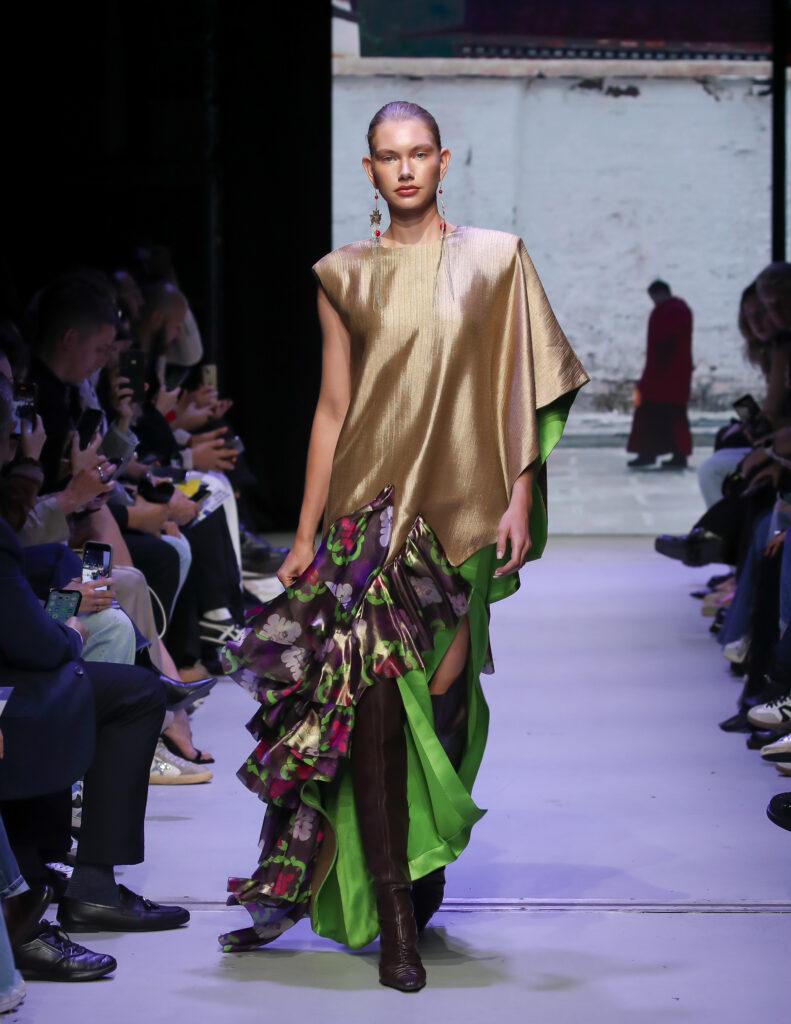
In a previous editions of MFW, Boys of Soweto from South Africa brought tailored street swagger, while Egypt’s Alia Abaza offered a fresh North African perspective. Their presence underscored how communities that once shaped Western trends from the margins now author their own style narratives.
Local Craft in a Global Conversation
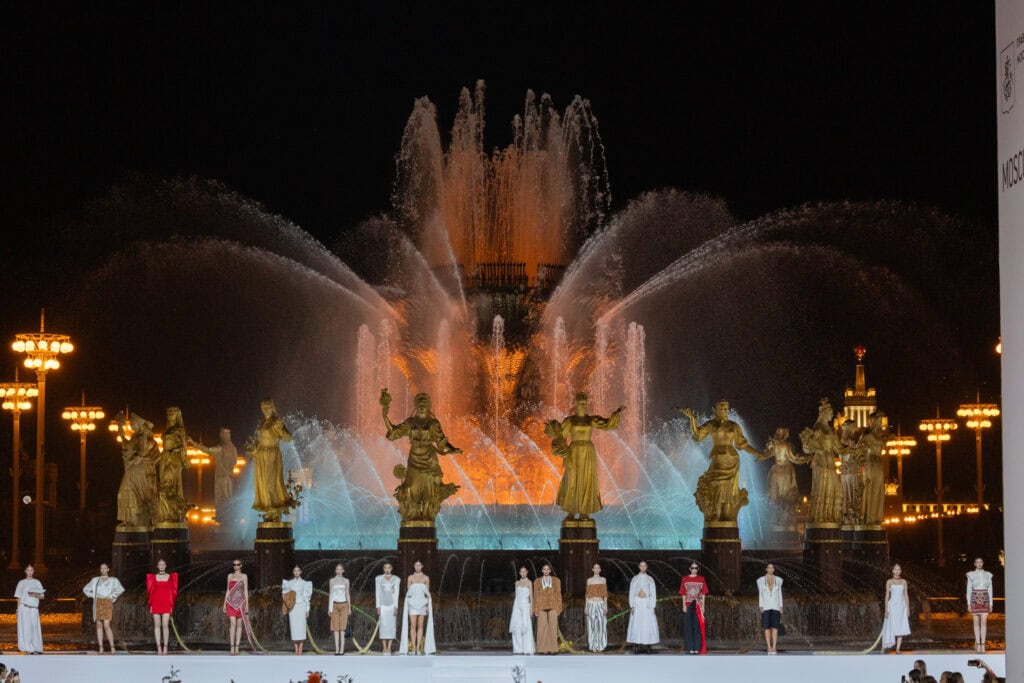
Russian brands added depth without dominating. For instance, Ianis Chamalidy anchored the schedule with clean lines and conceptual layering. Sergey Sysoev linked Kosygin University’s students to the runway, blending education and atelier skills. Furthermore, Sasha Gapanovich brought hand-worked romance and performance to the runway. Loom Weaving reminded everyone that Armenian craft can be spectacular. Likewise, in past seasons, heritage names Chapurin and the late Valentin Yudashkin offered continuity, showing how history and experimentation can share space.
Emerging names from Global South Countries gave the week extra spark. ABZAEVA from Nadezda Abzaeva and previous season Craft Linen from Kazan worked with natural fibers. In addition, Ruban Couture’s thoughtful presentation at Tolstoy’s House proved that innovation thrives outside the traditional capitals.
Sustainability Leads the Conversation
At MFW, sustainability isn’t a side theme; it led the narrative. Past MFW designers By/DAS and reaffirmed upcycling as a design language. LUBOVI showed airy gowns in natural fibers with recycled elements. While Ups. Upcycle lived up to its name with bold reuse. The season’s standout, Atelier ODOR by Nikita Kalmykov stunned with dreamlike pieces crafted entirely from deadstock fabrics sourced from major design houses, turning waste into wonder and Polone leaned into handcraft, lace, and intricate weaving. Even Ruban Couture’s material choices proved that luxury and responsibility can walk hand in hand. Sustainability shaped not just the details, but the direction of the week itself.
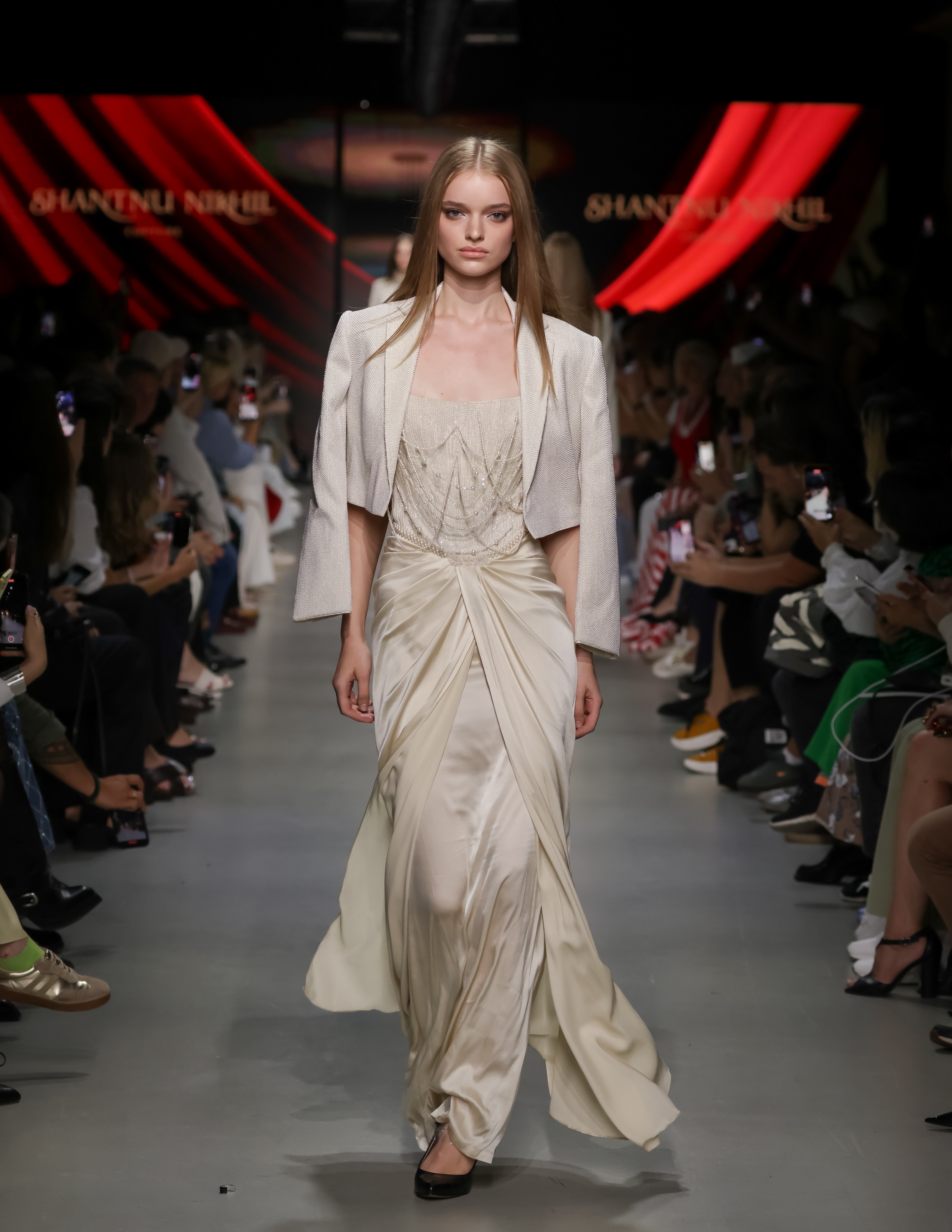
Key Trends Shaping Fashion
Color spoke loudly. For example, berry jolts, citrus sparks, and neon flashes broke through muted palettes. Textures became stories, lace over viscose, sequins softened by matte wool, silk brushing rough cotton. Shapes went big: capes, heroic sleeves, and commanding shoulders delivered drama without tipping into costume. Therefore, the emotion felt expansive, but the execution stayed disciplined.
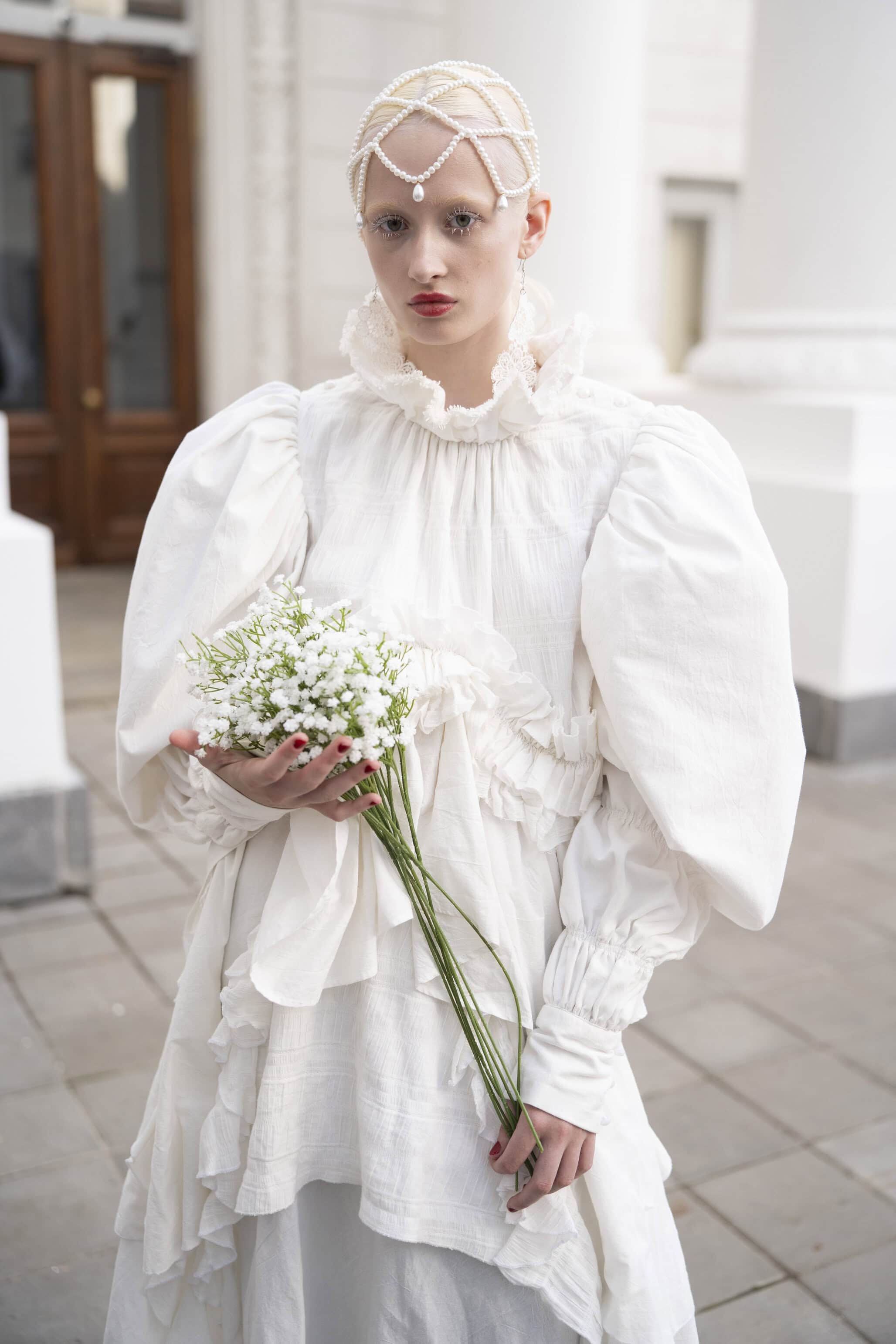
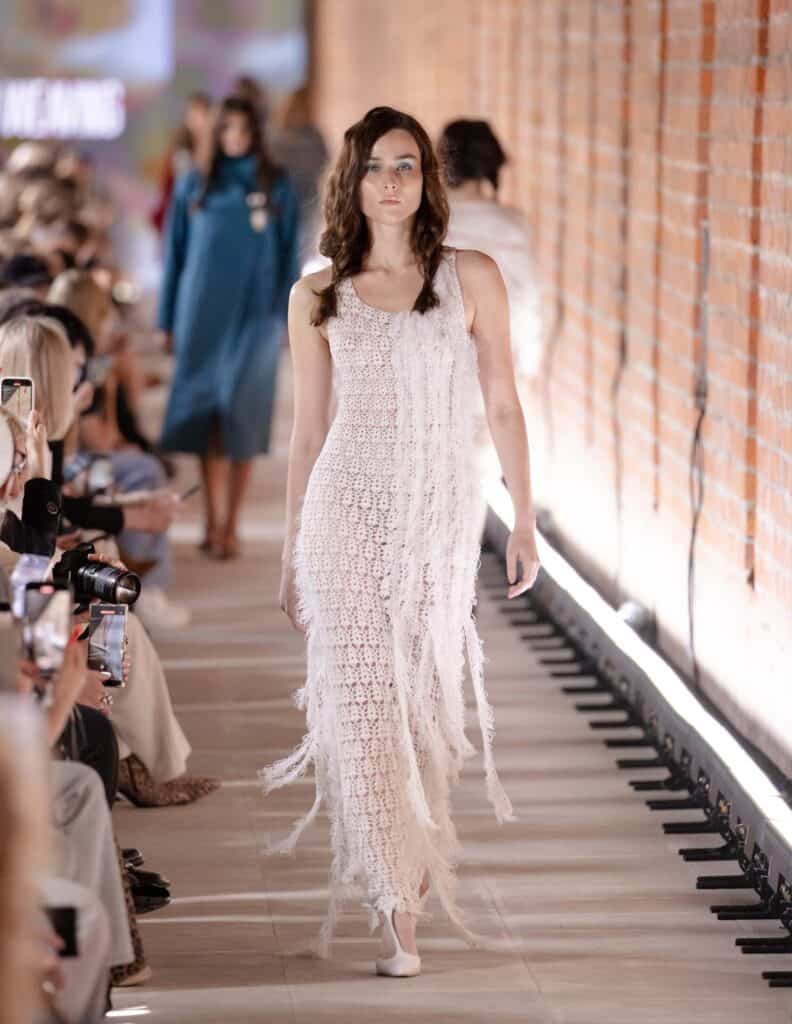
A Decentralized Future
The week’s runways felt like a conversation between continents. Brazilian fluidity danced with South African glamour. Chinese craftsmanship is connected with Nigerian-American boldness. As a result, designers from Global South Countries did not wait for Paris or New York’s approval, they claimed their place.
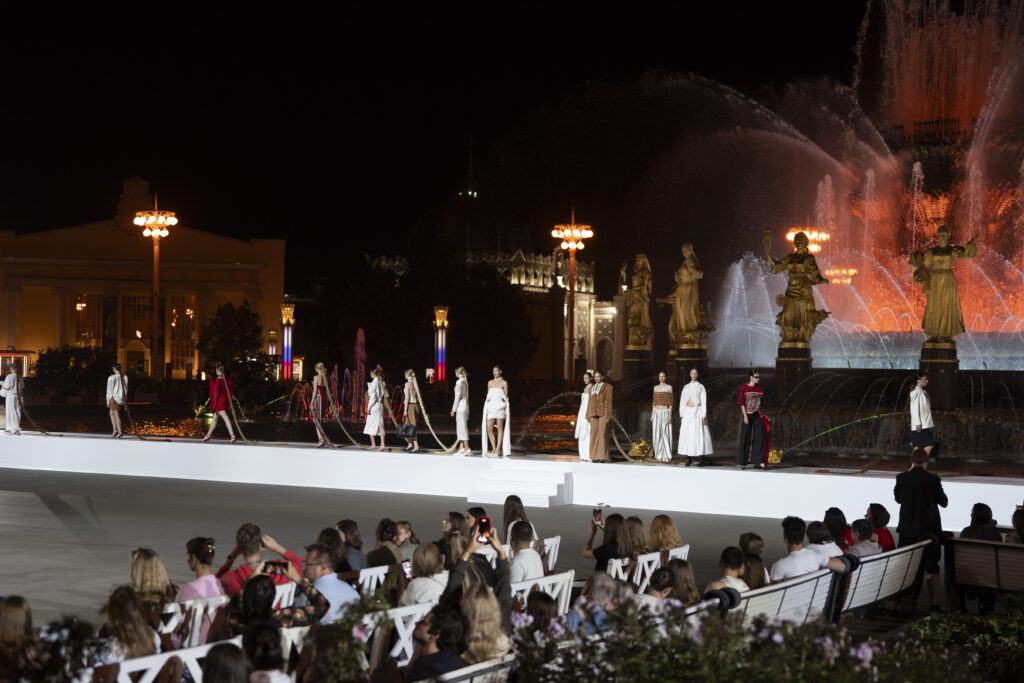
Finally, the click of heels on steel, the snap of cameras, and a chorus of languages beneath Tolstoy’s eaves did not feel like a detour from fashion’s main stage. Instead, it felt like a signpost for where the industry is headed: decentralized, diverse, and unapologetically global. The future of fashion is no longer written in one city’s script, it is being co-authored across the Global South Countries, one daring sleeve and recycled silk at a time.
Opening Image: Artimisi from Brazil
Share this post
Patrick Duffy is the founder of Global Fashion Exchange, a company catalyzing positive impact through strategic consulting roadmaps focusing on supply chain transparency, worker rights, responsible production for B2B as well as consumer facing programming and community building focusing on aligning people or communities with the SDGs.
Experience developing networks and activating ideas, guiding creative teams globally, and working with institutions like the Victoria and Albert Museum and UNESCO, and iconic spaces such as Federation Square Melbourne, Madison Square Garden, Bryant Park in New York City, and The Dolby Theatre in Los Angeles.
Patrick has produced clothing swaps all over the world from, with GFX Active in over 100 countries. Each GFX event focuses on building community, education and transformational business models. Partnering with global brands, key stakeholders, and academia to help create awareness and positive impact through conscious consumption
Patrick harnesses the power of media to create positive social and environmental impact. Through storytelling, education, and advocacy, he raises awareness, inspires action, to catalyze change. By highlighting issues and solutions, Patrick creates strategic campaigns to engage audiences, influence attitudes and behaviors, and contribute to a more sustainable and just world. Additionally, Patrick is the Sustainability and Positive Impact Director of Paris based @IRKMagazine and Editor In Chief of @IRKLiving
Patrick has produced and co-curated events and marketing/PR campaigns for recognized brands across art, fashion, and tech spaces including @virginhotels @britishfashioncouncil @mspdid @moethennessy @microsoft @lagosfashionweekofficial @perutradenyc @fashionimpactfund @istitutomarangonidubai @peaceboatus @lisboafashionweek and more spanning 15 years and hundreds of events in 5 continents.
Read Next

